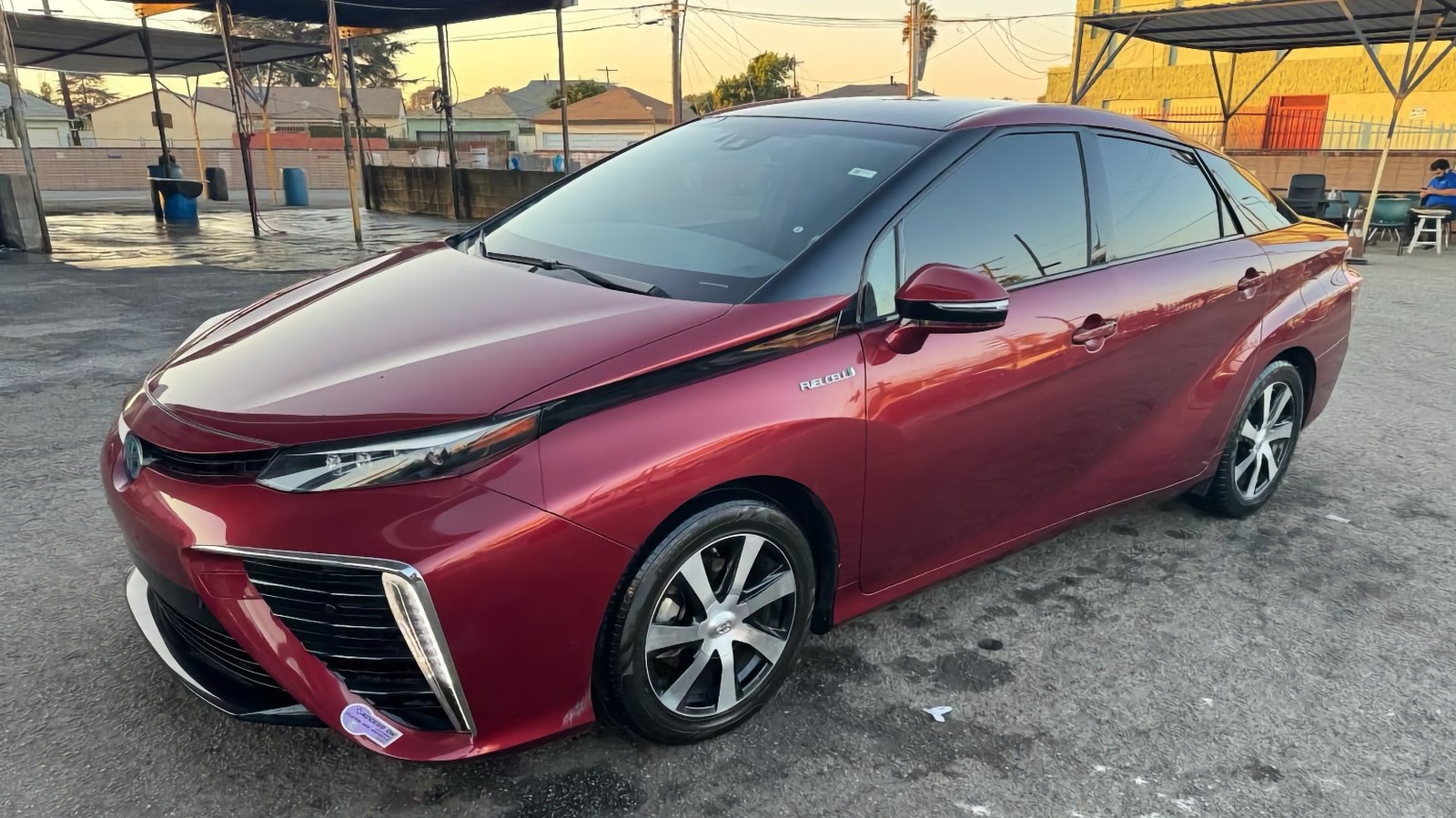
Hydrogen is the most abundant element in the cosmos, which makes it odd that there are so few places that cars like today’s hydrogen-powered Toyota Mirai can fill up with the stuff. Let’s see if a low price can counter that highly inconvenient attribute.
It’s safe to say that Mercedes didn’t hit one out of the park with last year’s introduction of its electric G-Class, the quad-motor G580. Perhaps it’s the added outlay over the V8 version, or maybe the EV edition’s somewhat limited 239-mile range that’s holding it back. Whatever the reason, the gas G-Wagon currently outsells the electric edition by a factor of five.
The 1991 Mercedes Brabus G36 we looked at yesterday took its marching orders from a specially tuned 3.6-liter gas-powered straight-six and featured luxurious appointments in its cabin, all courtesy of the tuning house Brabus. At $39,500, it proved to be about as popular with all of you as the modern-day electric edition is with the general public. Ultimately, that got it “Brabusted” in an overwhelming 78% No Dice loss.
The future
Speaking of electric vehicles, we’ve got one on the docket today. This 2019 Toyota Mirai differs from your run-of-the-mill battery electric vehicle, however, as it generates power through a hydrogen fuel cell. Toyota named the model Mirai, which is the Japanese word for future, which seems fitting considering its whiz-bang power generation. The concept of fuel cell power may seem cutting-edge, although it dates back centuries, and General Motors had a prototype fuel cell van running all the way back in the mid-1960s.
The Mirai uses a polymer electrolyte fuel cell, which combines hydrogen stored in onboard high-pressure tanks and oxygen pulled from the air pushed through and around a polymer barrier to strip out electrons between a cathode and an anode, generating electricity. As the Mirai’s fuel cell is only able to achieve a maximum output of 114 kW, a buffer battery pack is used to ensure smooth delivery of electricity to the 113 kW electric motor. Hydrogen for the fuel cell is stored in a pair of heavily reinforced nylon tanks that give the Mirai a total capacity of 122 liters. That works out to around 320 miles of range, which can be the Mirai’s Achilles heel.
Sticking close to the source
The issue with the Mirai, or any fuel cell vehicle, is that filling stations are few and not so far between. Currently, there are 51 hydrogen fueling stations nationwide, with 49 of them concentrated in the metro areas of California. That means nobody’s going road tripping in their Mirai any time soon. There are other issues with the hydrogen infrastructure too. People have complained about fuel nozzles freezing to the car due to the extremely low temperatures needed to keep hydrogen in a liquid state. And then there’s the cost. Hydrogen is generally more expensive per mile than gasoline, meaning owners aren’t saving money with the sacrifice of range and fueling options.
There’s also the weirdness factor afflicting the first-generation Mirai. It’s as though when Toyota’s Prius designers tried to make the ugliest car on the road with the fourth-generation Prius Prime, the Mirai’s stylists saw the challenge and said, “Hold my Sapporo.” Yeah, it’s ugly, but like a slobbery pug dog, it’s ugly in a lovable way. The Prius Prime, on the other hand, is just ugly, like a bug.
But for around town…
Who, then, is the Mirai for? It would be a great car for someone who wants to go electric for the environment, but lives in an apartment or other housing arrangement (a yurt?) where home charging isn’t an option. Oh, and they probably should live in LA. Go Dodgers!
For that very specific audience, this Mirai looks to be in pretty good shape. According to the ad, it sports 40,000 miles under its belt and currently “runs great” and is “without any issues.”
The pictures in the ad show the car at a place called Monte’s Car Wash in South-Central Los Angeles, so it’s probably also going to be clean and tidy. It does look to be without any aesthetic issues save for the front bumper cap being riveted(?) to the sub-structure just ahead of the passenger-side wheel well. The interior, on the other hand, appears clean and is very well appointed. There is a question of just when these pictures were taken, though. The seller says the title is clean and that the registration is current, but those pics clearly show the car with 2024 tags. Something is amiss in that equation.
Mirai money
If we take the seller at their word, and assume that the car looks as good (meaning clean, not attractive), then we should now consider the $5,900 asking price. That’s a jaw-dropping 10% or so of what this Mirai cost when new, just six years ago. And you thought plug-in electrics had atrocious depreciation. Part of that is owed to the inconvenience of the car’s fueling infrastructure and part to the fact that few Toyota dealers will touch these cars as they lack the trained service technicians the car requires.
What’s your take on this Mirai at that $5,900 asking? Does that feel fair for a car with such limited appeal? Or does that price have you exclaiming, “Oh, the humanity”?
You decide!
Los Angeles, California, Craigslist, or go here if the ad disappears.
Help me out with NPOND. Contact me at [email protected] and send a fixed-price tip. Remember to include your commenter handle.

